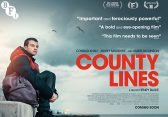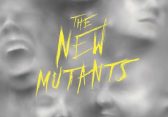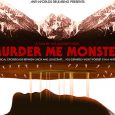I can only imagine what director Quentin Dupieux pitched to the studios when selling this film:
“When is a tyre not a tyre?
When it’s a psychokinetic killing machine.”
Of course, a pitch that doesn’t involve the typical “Terrorists take over the world and it’s up to one plucky citizen who just happens to be a retired secret agent to save us” is going to catch the attention of producers, but Rubber is no where near as fun or intriguing as it sounds.
Robert is a tyre. He awakens in the middle of the desert, much to the delight of a crowd that apparently has paid to watch his actions (much like the audience in the cinema, geddit?) and rolls aimlessly through his surroundings. On his journey, he encounters many of the habitants: rabbits, spiders, crows and the like. Being the absolute badass that he is, he proceeds to make them combust. Y’know, just for a laugh. It’s not long before he reaches the road and a pretty passer by (Roxane Mesquida) catches his.. eye? He/it/whatever, follows her to a motel and an obsession develops and Robert uses his powers of explosion to destroy anyone that gets in his way.
I apologise for that somewhat flimsy plot summary, but it could possibly be the most unusual one I will ever write. The opening scene isn’t convention in the slightest either; in fact, it prides itself on being “different”. Starting with a car driving down a dusty road, knocking over sporadically placed chairs, it stops and the sheriff emerges from the trunk. None of it has meaning, as he explains directly to us (also known as “breaking the fourth wall”, for all you film studies students out there) soon after being introduced that Rubber is a homage to the ‘no reason’ aspect of movies, posing questions such as “Why is ET brown?” “Why do the boy and girl fall so madly in love in romance movies?” and “Why did Adrian Brody have to hide in The Pianist when he’s an insanely talented musician?” No disrepect, sir, but I believe it could be something to do with the teeny weeny fact that he was a Jew in Nazi Germany.
That small point aside, Dupieux uses the excuse of it being a homage to get even more ridiculous than the plot on many occasions. Whilst mildy comedic at first, the whole “that’s not supposed to be there!” take on things becomes tiresome (not intended) very, very quickly. There’s no denying that it looks pretty though: the cinematography is the aspect worthy of most credit. Even though the location is a deserted town, Dupieux sucks as much of the scenery in as possible, then throws it through the camera lens. In addition to the surroundings, we see a lot of gore, close up. The exploding heads combined with the rising rumble from Robert that signifies his concentration on a subject are the best scenes of the film. It’s a shame they only last 2 minutes maximum.
The focus here is the tyre, and there is absolutely no way to review its ‘performance’. However, there are well crafted scenes that successfully personify the object: drinking water, watching TV, even attempting to swim. I started to question my sanity when I found myself laughing at the last one. The co stars stumble their way through dialogue which appears to have been written on the day of filming, and any development of character is non-existent; in fact, there’s no explanation or reason for them to be there. Oh wait, that’s what the director wanted, for us to just ignore these silly things like a cast, or a coherent script.
Ultimately, Rubber is a clever idea for a short film that, for reasons unknown, was made into an overlong and flat feature length picture. A baffling subplot which sees the spectators eating tainted food is blatently only used to drag out the run time, and the sheriffs constant reminders that “none of this is real!” raises the question of “Why am I even watching this then?”
The answer?
“No reason.”


























